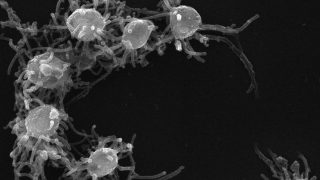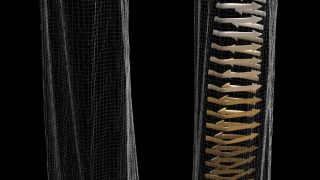
MI weekly selection #205
Technique adds color to electron microscope images Researchers at the University of California at San Diego have developed a technique that adds color to black-and-white electron microscope images. The scientists create a black-and-white base layer by adding a heavy metal to the specimen, then create another layer by adding a rare earth metal that clings […]








